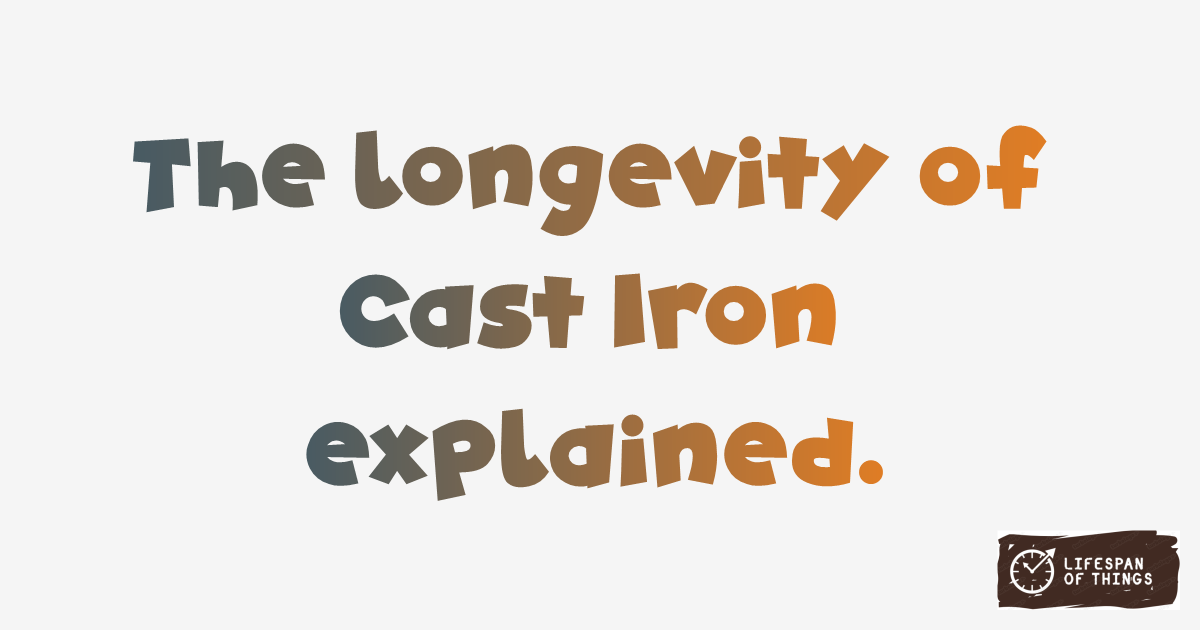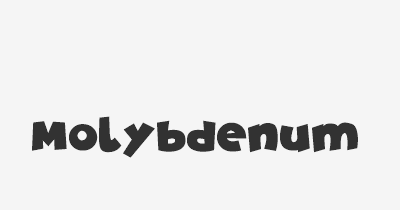
50 - 100 Years
Lifespan of Cast Iron is 50 - 100 Years. Cast iron is known for its longevity and robustness against wear and tear. Factors like proper maintenance and protection from moisture can significantly extend its lifespan. Understanding the impact of external elements is key to maximizing the durability of cast iron.
Useful Information
Cast iron exhibits excellent strength and heat retention properties, making it ideal for cookware and machinery. Gray iron, white iron, and ductile iron are common types, each with distinct characteristics like hardness and ductility.
Cast iron is widely used in the automotive industry for engine blocks and in construction for pipes and fittings. Its resistance to heat and corrosion makes it a preferred choice in stoves and fireplaces. Innovations like cast iron furniture showcase its adaptability in various applications.
Discover the common applications of ferrous metals in construction, machinery manufacturing, and automotive parts for their high tensile strength and thermal conductivity.
The durability of cast iron varies based on exposure to factors like moisture, temperature fluctuations, and chemical corrosion. Regular maintenance, such as oiling to prevent rust, can prolong its lifespan. Avoiding sudden impacts and extreme conditions helps retain its structural integrity.
The production of cast iron involves high energy consumption and carbon emissions. Recycling scrap iron reduces waste and conserves resources, offering a more sustainable option. Manufacturers are exploring eco-friendly practices like using recycled materials in cast iron production.
To maintain cast iron, season it regularly with oil to prevent rust and enhance its non-stick properties. Avoid using harsh cleaning agents that can damage its surface. Store cast iron in a dry place to prevent moisture-induced corrosion. Regular inspections for cracks or signs of wear ensure its longevity.
Lifespan Comparisons
| Compared Item | Comparison Description |
|---|---|
| Lifespan of Steel | Cast iron and steel share a similar lifespan, both durable options for long-lasting structures. |
| Lifespan of Wrought Iron | Wrought iron and cast iron have comparable lifespans, offering strength and longevity in various applications. |
| Lifespan of Carbon Steel | Carbon steel and cast iron both endure for decades, ideal for robust industrial and construction projects. |
| Lifespan of Stainless Steel | Stainless steel and cast iron exhibit similar durability, ensuring reliability in demanding environments. |
| Lifespan of Cobalt Alloys | Cobalt alloys last significantly shorter than cast iron, suitable for specific short-term applications. |
| Lifespan of Gold | Gold surpasses many materials, including cast iron, in longevity with a much longer lifespan. |
| Lifespan of Silver | Silver and cast iron share a similar lifespan, both valued for their enduring qualities in various uses. |
| Lifespan of Platinum | Platinum and cast iron have a comparable lifespan, making them both durable choices for lasting structures. |
| Lifespan of Bell Peppers | Unlike cast iron, bell peppers have a significantly shorter lifespan, best enjoyed fresh in short periods. |
| Lifespan of Apples | Apples have a much shorter lifespan compared to cast iron, needing consumption within days to enjoy freshness. |
| Lifespan of Oranges | Oranges, with a lifespan shorter than cast iron, are best consumed within a couple of weeks to enjoy their peak flavor. |
| Lifespan of Bananas | Bananas have a brief lifespan when compared to cast iron, requiring consumption within days to avoid spoilage. |
| Lifespan of Grapes | Grapes, with a shorter lifespan than cast iron, are best enjoyed within a week to savor their sweetness. |
| Lifespan of Strawberries | Strawberries have a fleeting lifespan compared to cast iron, demanding consumption within days for optimal freshness. |
| Lifespan of Ketchup | Ketchup, with a much shorter lifespan than cast iron, remains usable for a considerably shorter period before expiry. |
Frequently Asked Questions
Lifespan of Cast Iron is 50 - 100 Years.
Cast iron is commonly used in the automotive industry due to its durability and heat resistance, making it ideal for engine blocks.
To protect your cast iron cookware from moisture damage, ensure it is thoroughly dried after washing and store it in a dry place.
Gray iron is more ductile and easier to machine, while white iron is harder and more wear-resistant.
Recycling scrap iron reduces waste and energy consumption, promoting sustainability in the production of cast iron.
Season your cast iron cookware regularly with oil to prevent rust and enhance its non-stick properties.








